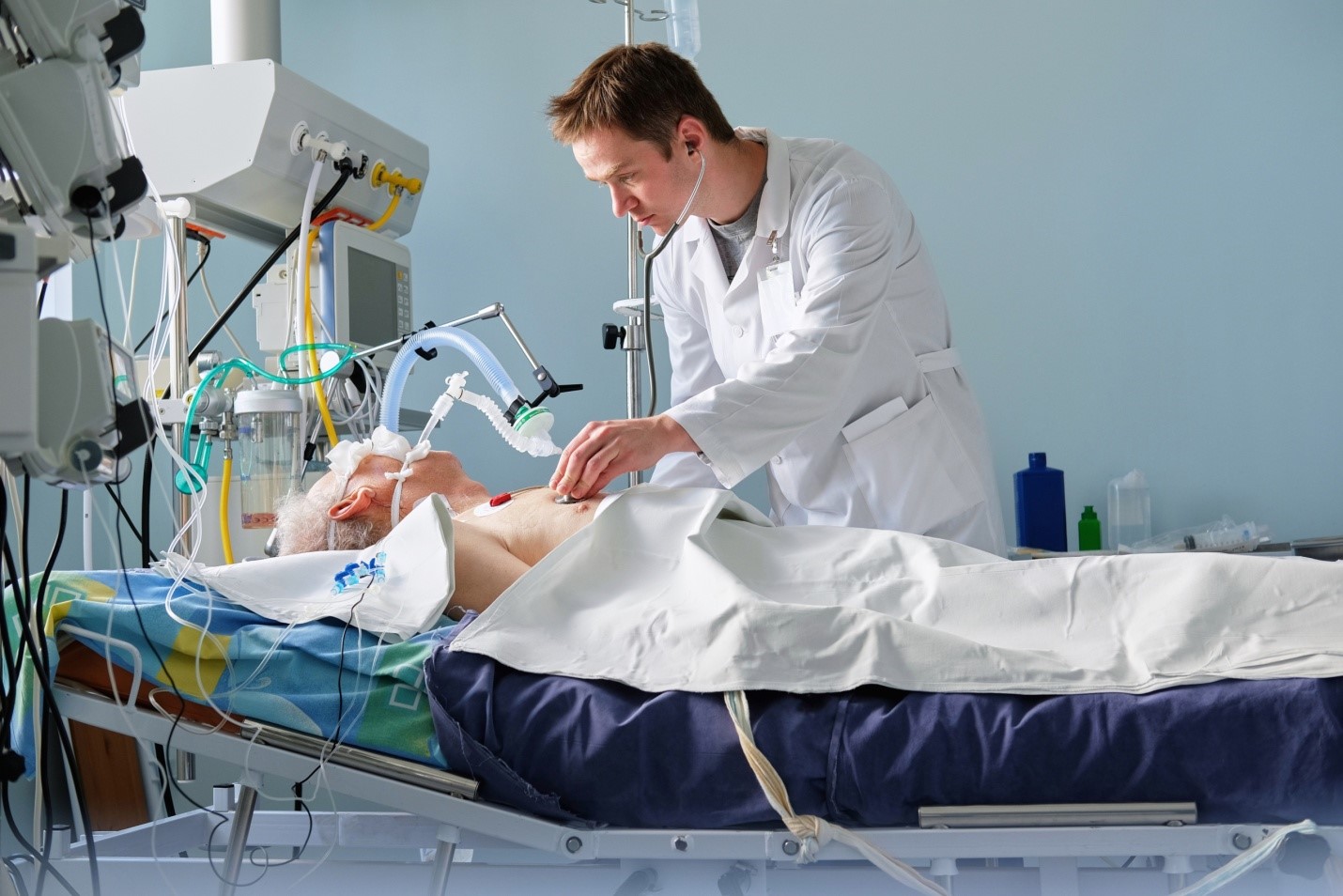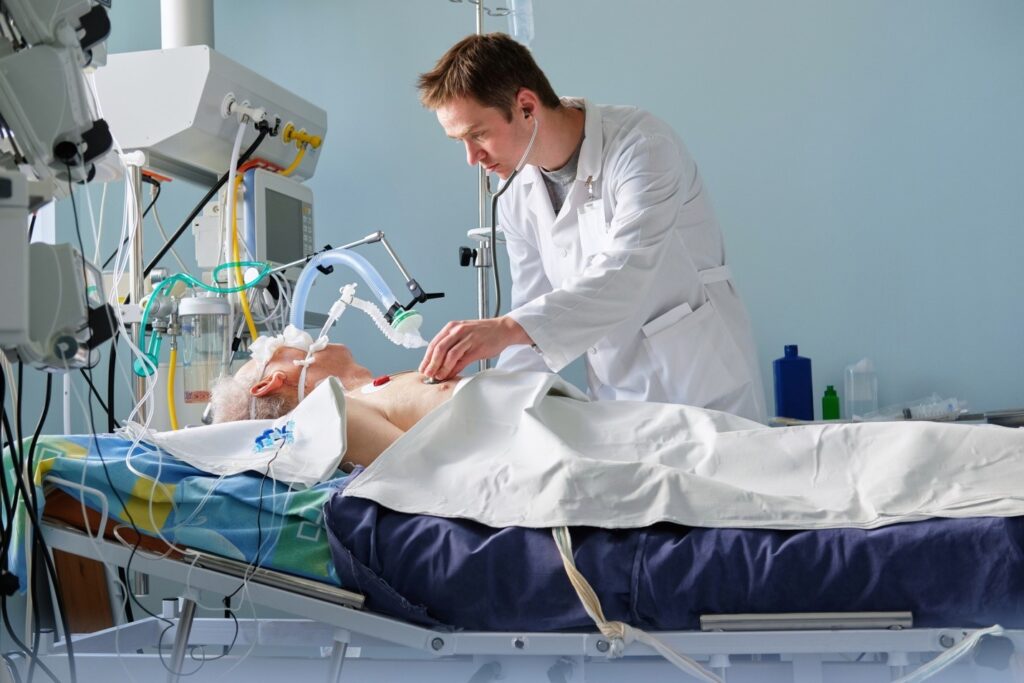
Top 10 effective ways to increase oxygen level organically
A ventilator is a machine that aids or replaces breathing by pushing air into the lungs. Intensive care unit (ICU) patients may require the assistance of a ventilator. The people who have COVID-19 symptoms that are severe needs to be in ventilator too.
If a person is unable to breathe effectively on their own, it could be because they are under general anaesthesia or have a respiratory ailment.

There are various types of ventilators, each of which gives variable levels of assistance. The type of medication a doctor prescribes is determined by the patient’s condition.
Be it hospital or home, ventilators serve a critical role in saving lives.
They usually use a breathing tube to pump air into the patient’s lungs that has been combined with oxygen or medicine. It not only ensures that oxygen and air are delivered to the patient’s lungs, and also remove carbon dioxide.
1. Face Mask Ventilator
A face mask ventilator is a noninvasive device that helps people breathe and get enough oxygen. To use one, a person puts on a mask that covers their nose and mouth and blows air into their lungs.
These are commonly used for chronic diseases like chronic obstructive pulmonary disease, however some doctors may prescribe them for persons with COVID-19.
2. Intensive Care Ventilator
These are typically larger and operate on AC power (though virtually all contain a battery to facilitate intra-facility transport and as a back-up in the event of a power failure). It gives you more control over a large number of variables. Many ICU ventilators also display graphic representations of each breath.
3. Neonatal Ventilator
These ventilators are intended specifically for preterm neonates and are a specialised subgroup of ICU ventilators that deliver the smaller, more accurate volumes and pressures needed to ventilate such babies.
4. Positive Airway Pressure Ventilator
These are made specifically for non-invasive ventilators and can be used at home as well. It works by using an endotracheal or tracheostomy tube to increase the patient’s airway pressure. Until the ventilator breathe is turned off, the positive pressure lets air to flow into the airway. When the pressure decreases to zero, the lungs and chest wall’s elastic rebound pushes the tidal volume up.
5. Mechanical Ventilator
Mechanical ventilators are machines that completely automate the breathing process. These are used by doctors when a patient is unable to breathe on their own.
They function by forcing air into the lungs and removing carbon dioxide through a tube in the person’s throat. The pressure, humidity, and temperature of the air are all controlled by a ventilator device. This enables medical personnel to control a person’s respiration and oxygen levels.
6. Tracheostomy ventilator
A tracheostomy necessitates the use of a different type of ventilator.
A tracheostomy is a technique in which a doctor makes a hole in the windpipe and inserts a tube that allows air to pass through. This allows a person to breathe without having to use their mouth or nose.
This hole can also be used to provide ventilator support to people who have had tracheostomies.
7. Negative Airway Pressure Ventilator
The air is mechanically evacuated to create a vacuum inside the tank, resulting in negative pressure, which causes the chest to expand. It lowers intra-pulmonary pressure while increasing the flow of ambient air into the lungs. The pressure inside the tank equalises with the ambient air pressure as the vacuum is released. Passive exhalation is thus caused by the elastic coil of the chest and lungs.
8. Manual Resuscitator Bags
Manual resuscitator bags are devices that allow patients to adjust the airflow of their ventilator with their hands. An empty bag, or “bladder,” is squeezed to push air into the lungs with these devices.
Patients can control the airflow of their ventilator with their hands using manual resuscitator bags. These devices work by compressing an empty bag, or “bladder,” to force air into the lungs.
9. Transport Ventilator
These are smaller and more durable, and they can be operated pneumatically or with AC or DC power. A transport ventilator is a ventilator developed for use in patient transportation to assist patients who are unable to breathe independently. They’re also used by people who need ventilators to breathe but want to be mobile in their communities and while travelling.
10. High Frequency Ventilator
The frequency ranges from 60 per minute to 3000 per minute. Jets: It relies on the inherent elastic recoil of the lungs, allowing for passive expiration. A cannula or endotracheal tube is used to provide a high-pressure jet to the airways. Oscillators: This device has a reciprocating piston that aids in expiration during the return stroke. Expiration is active in this case.
Working of Ventilator
For patients who are too unwell to breathe on their own, ventilators help relieve stress on the body and encourage healing by assisting or taking over the respiratory function. Positive pressure is used to force air into the lungs.
They usually use a breathing tube to pump air into the patient’s lungs that has been combined with oxygen or medicine. It not only ensures that oxygen and air are delivered to the patient’s lungs, but it also simulates an exhale to remove carbon dioxide.
The following are examples of various modes or settings:
A predetermined amount of air is provided to the patient in a volume controlled setting.
Air is supplied to the patient until a preset pressure limit is achieved.
When applied to a patient, dual combines both the volume and pressure choices.
Who needs Ventilator:
Invasive ventilators are designed to be used as a temporary breathing aid in patients undergoing surgery, those suffering from significant respiratory infections, or those suffering from any other medical condition that prevents them from breathing normally. This sort of care is often utilised in the ICU and is meant to help ease the breathing process, remove some of the stress on the body, and allow the patient to recuperate even when they are able to breathe on their own without the aid of a ventilator. Some individuals may require long-term care if they are unable to breathe on their own.
Conclusion:
Ventilators are breathing aids that help people who are suffering from respiratory failure. Ventilators come in a variety of styles, including noninvasive and intrusive, and give differing levels of assistance. COVID-19 has raised the demand for ventilators.
People who are still suffering problems after weaning off of ventilator support should see their doctor.
